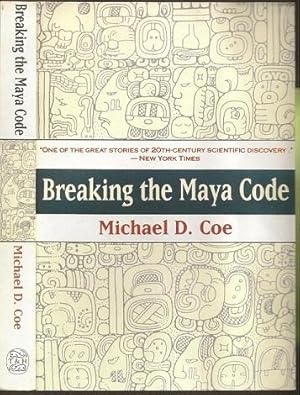Michael Douglas Coe Inscribed (1 results)
FeedbackSearch filters
Product Type
- All Product Types
- Books (1)
- Magazines & Periodicals (No further results match this refinement)
- Comics (No further results match this refinement)
- Sheet Music (No further results match this refinement)
- Art, Prints & Posters (No further results match this refinement)
- Photographs (No further results match this refinement)
- Maps (No further results match this refinement)
- Manuscripts & Paper Collectibles (No further results match this refinement)
Condition
- All Conditions
- New (No further results match this refinement)
- Used (1)
Binding
- All Bindings
- Hardcover (No further results match this refinement)
- Softcover (1)
Collectible Attributes
- First Edition (1)
- Signed (1)
- Dust Jacket (No further results match this refinement)
- Seller-Supplied Images (1)
- Not Print on Demand (1)
Language (1)
Price
- Any Price
- Under £ 20 (No further results match this refinement)
- £ 20 to £ 35 (No further results match this refinement)
- Over £ 35
Free Shipping
- Free Shipping to United Kingdom (No further results match this refinement)
Seller Location
Seller Rating
-
Breaking the Maya Code
Published by Thames and Hudson Inc, New York, 1993
Seller: The Book Collector, Inc. ABAA, ILAB, Fort Worth, TX, U.S.A.
First Edition Signed
£ 38.34
Convert currency£ 63.28 shipping from U.S.A. to United KingdomQuantity: 1 available
Add to basketSoft cover. Condition: Fine. 1st Edition. 304 pages with tables, figures, plates, glossary, bibliography, appendices and index. Royal octavo (9 1/4" x 6 1/2") bound in original wrappers. Inscribed by by Michael Coe First paperback edition. Michael Coe's book tells the story of the decipherment of the hieroglyphic script of the ancient Maya, builders of grand and monumental city-states in the forest lands of central America during the period about 250 BC to 800 AD. Mayan is the latest great decipherment, to be set alongside the two great classics, Champollion's reading of Egyptian hieroglyphics in 1822, and Ventris & Chadwick's discovery in 1952 that the Linear B tablets of Minoan Crete were in an archaic Greek. And it will also, be the last great decipherment. Other ancient scripts are undeciphered, or only partly deciphered; but they promise few, short, or less than thrilling texts. The Linear B tablets are clerical records of commodities logged into Minoan store-houses, and the undeciphered and preceding Linear A promises more of the same. Mayan is grander stuff, monumental inscriptions of strangely-titled kings and princes, of the complexities of their lineage and descent, and of the exact chronology of their lives and reigns. The story of Mayan decipherment is longer, odder and more compelling than most. It is told here with great vigor by Professor Michael Coe, who was himself involved; he offers an insider's story with strong views of the personalities, competence and abilities of some colleagues. The texts are carved on stelae, on objects of jade and shell, and on panels set into ceremonial buildings. Many of these have been, in modern times, looted and sold on the art market, often sawn up into fragments. Other texts are painted on walls and on pottery, and on the pages of folding books made of fig bark. They do not immediately look like writing; they are miniature and not-so miniature pictures, called hieroglyphs by analogy with ancient Egyptian, also a form of picture-writing. Many decipherments depend on some kind of bilingual text that sets the unknown script alongside the same words in a known language. For Mayan this had to be patched together from the very few documents ¿ 'codices' ¿ that survived the holocaust of Maya learning after the Spanish conquest, and from fragmentary transcriptions in some early Spanish sources of the immediate contact period. The most important is a transliterated Maya alphabet by Diego de Landa, the man most notorious for the auto-da-fes that burnt the hieroglyphic books. Elements had been in place for years, and so had some wrong expectations. Quite suddenly, some pieces of the jigsaw fell into position, some new approaches were tried, and as one reading made possible another, the decipherment became a rush. Key contributions were made by a group of Russian researchers in Leningrad (as St Petersburg was then called); unable in those pre-glasnost days to travel abroad, they had never seen the places and inscriptions their working careers were devoted to. One of the Americans was a teenager, David Stuart, who got involved by being taken to Maya sites by his father, who worked for National Geographic. Condition Inscribed on half title else a fine copy. Inscribed by Author(s).


